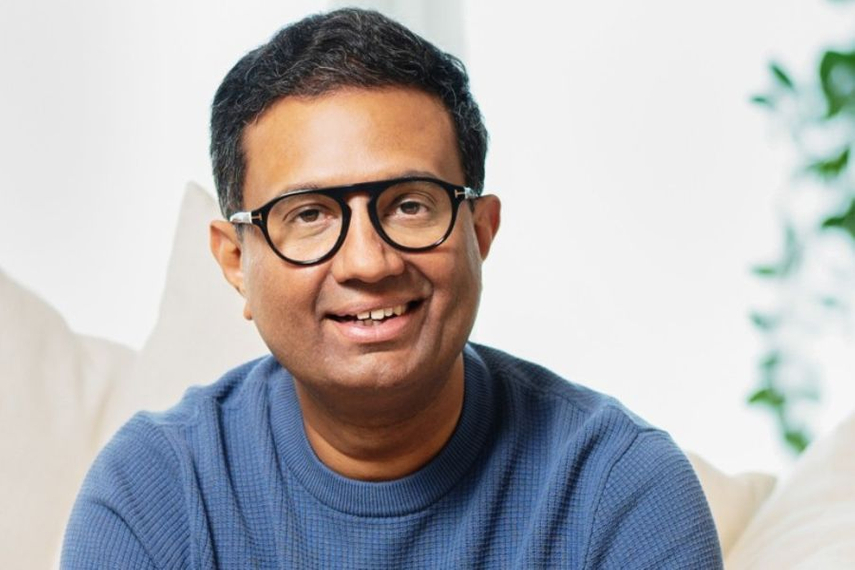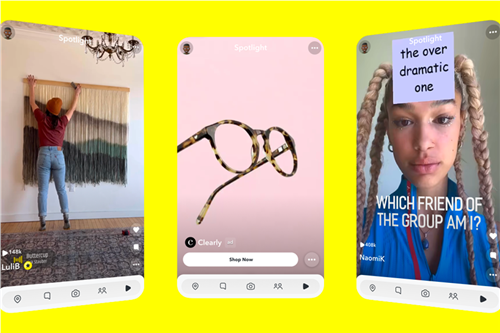Ajit Mohan, the president of Asia Pacific for Snap, the maker of Snapchat, is a man on a mission.
The former vice president and managing director of Meta in India joined the platform at the start of 2023 when Snap saw a quarterly sales decline amid digital ad market disruptions. The company reported a 7% drop in Q1 revenue to $988.6 million compared to the previous year.
Mohan, a former management consultant, has spent the last half of the year trying to convince advertisers in Japan, China, India, Australia, and Southeast Asia to spend their money on Snap rather than on TikTok, Meta and Google.
However, Mohan has a mammoth task, given that Snap has faced significant challenges due to rapid changes in the digital advertising sector, influenced by unfavourable macroeconomic conditions and the impact of Apple's privacy policy alterations.
These changes have resulted in increased difficulty in tracking the effectiveness of specific ad campaigns.
"The changes in the ecosystem impacted everyone, leading to the need for new forms of accountability and delivering results for partners. This was a common challenge for all," Mohan tells Campaign.
"We have focused on building the lower funnel, the direct response (DR) funnel. In the early years of monetisation on Snapchat, we heavily relied on brand ads. However, over the past 12 months, we have made deliberate shifts and investments to strengthen our DR capabilities. We are now developing a new area of expertise that adds value to our partners and drives revenue for our platform."
In addition, the mass layoffs hitting the tech sector have also not shielded Snap. Most of the senior hires in APAC, announced a year ago by Snap, are no longer in their roles.
For example, Amanda Ang, the former head of public policy for East Asia at Snap, joined Circles.Life after just four months. Ang said she was impacted by the "tech winter of 2022" on her LinkedIn page.
Other departures include Saurabh Dangwal, the former head of global brands for APAC, who moved on to Spotify after just eight months in his role. Dan Heffernan, the former director of a global agency in APAC, has joined TikTok and Igor Lima, the former head of global brands and tech for Sanp in APAC, vacated his role after just five months.
Improving its advertising offerings
To address Snap's current challenges in the digital ad market, Snap is focusing on its augmented reality offerings and building a performance business, incorporating lower funnel capabilities, measurement, attribution, and conversion optimisation.
Snap has also tapped into the generative AI trend with the launch of My AI and a subscription offering called Snapchat+.
"We have a smaller revenue than our peer companies in the consumer tech industry, with approximately $4.6 billion in revenues last year," explains Mohan.
"However, we have a community of 750 million Snapchatters worldwide, including APAC, making us a valuable platform for marketers to reach a young audience that is often challenging to engage with elsewhere."
Mohan continues: "Our investment in the performance business, along with incorporating large language model humans and My AI, can help marketers to drive user engagement and intent signals, which they can leverage for growth."
According to Mohan, the idea behind Snapchat+ was to cater to the platform's highly engaged and loyal community by offering them a subscription service with unique features and early access to app updates.
For instance, Snap introduced My AI to the Snapchat+ community before rolling it out to everyone else, allowing the platform to engage with the district, learn from their experiences, and involve them in testing new features.
Mohan claims that Snap has quickly gained over three million subscribers, reaching an annual revenue run rate of 100 million.
"This indicates that Snapchat+ has resonated with our community and is proving to be a significant revenue driver for the company," Mohan says.
Back to its AI roots
It is worth noting that Snap's investment in AR predates the recent rising trend surrounding generative AI. The company has been focused on developing AR capabilities since its inception, mainly by implementing lenses on the camera.
This investment has spanned over eight years, allowing Snap to extend AR offerings beyond the Snapchat app, introducing enterprise solutions that leverage the same capabilities.
For example, in April 2023, it partnered with the Singapore Tourism Board to use AR to enhance tourist experiences at popular destinations.
The pilot project began at Haji Lane, a well-known tourist spot, where visitors can enjoy five different AR experiences, such as games, polls, and trivia sharing, to learn the area's history and culture to life. Users can activate the AR lenses by scanning QR codes at each location through the Snapchat app.
With My AI, a personalised chatbot powered by OpenAI's GPT, users can customise the chatbot's name and wallpaper, and it can assist with gift recommendations, trip planning, recipes, and more.
Mohan claims Snap has made 'significant' strides, especially with the large language model (LLM) advancements, as the platform already offers developers the ability to use generative AI for lenses through Lens Studio.
He notes that, unlike Snap, his competitors, like TikTok, Google and Meta, use AI to enhance content choices and improve ranking algorithms for better content matching.
"The introduction of My AI into Snapchat was based on the belief that people would engage with chatbots just as they would with friends and family. By integrating powerful language models into conversational chatbots, Snap aimed to create a personal sidekick experience for users," says Mohan.
"The success of My AI is evident as over 150 million people have utilised it, generating 10 billion messages in just a few months. This makes Snap one of the largest chatbot platforms in the world."
According to Mohan, the advantage lies in this messaging experience aligning with Snapchat's core proposition, providing users with a familiar and comfortable environment.
He is excited about deploying these technologies in APAC, saying it presents an opportunity for learning and discovery among young people. Mohan says the accessibility and intuitive nature of LLM make them tools for educational purposes.
"With young users in mind, Snap aims to deliver a proposition that is easy to understand and use within a surface they are already familiar with. This focus on APAC aligns with the region's sizable young population," Mohan adds.
While similar to Microsoft's OpenAI-powered Bing, Snapchat addresses possible challenges with My AI, acknowledging its 'many deficiencies'.
Snap designed the chatbot to provide a unique persona for chatting within Snapchat, not to act as a search engine. Snap stores conversations for review and improvement but cautions users against sharing sensitive information.
Mohan says three fundamental principles guide Snap's approach, pointing out that privacy has been at the core of Snap's design since its inception, and this commitment extends to innovations like My AI.
Secondly, he explains that Snap adopts a cautious learning approach. For the Snapchat+ community that tested My AI before Snap rolled it out, the early feedback revealed that most (99.5%) interactions aligned naturally with the platform's guidelines, with only a tiny percentage involving deliberate attempts to elicit inappropriate responses.
"Snap has implemented OpenAI's moderation system within My AI to ensure responsible content. An age-appropriate layer has also been incorporated to align responses with the language suitable for different age groups. Additionally, parents can access information regarding their young adult's engagement with My AI, providing transparency and oversight," explains Mohan.
"When deliberate misuse is detected, appropriate action is taken, including limiting responses and, in some instances, blocking accounts. This approach allows Snap to continually learn and refine user and AI interactions, ensuring a safe and positive experience."
Mohan adds: "Snap's approach is rooted in learning, implementing filters for age appropriateness, adhering to guidelines, and taking necessary actions when violations occur. The company aims to evolve and improve based on insights gained from user-machine interactions."
The road ahead
While Snap's Singapore office, where this interview was conducted, has a fantastic view overlooking the Marina Bay area, it is surprisingly bland, without the bells and whistles available in Google, Meta and TikTok's offices.
Mohan reveals that the office is only a temporary outpost. Snap plans to move to a bigger office as the platform wants to establish a regional hub in Singapore to support and drive its growth strategy across Japan, China, India, and Australia in the next 18 to 24 months.
Driving its growth strategy includes scaling up its operations and hiring in Singapore, with 'significant actions' coming soon, promises Mohan.
"I want to continue our growth in APAC, leveraging the region's demographics and maintaining momentum in countries where we already have traction while strengthening our presence in Japan, China, India, Australia, and Southeast Asia," says Mohan when asked what he plans to achieve before he reaches his first anniversary in his role.
"I also want to build the business by effectively communicating our unique value and potential to marketers. We aim to be a vital enabler for fast-rising Asian companies, emphasising the power of engaging with our young audience and demonstrating how Snapchat can contribute to their growth."
The jury is still out if Mohan's lofty ambitions of ensuring marketers recognise Snap as an indispensable partner for their growth in APAC will pay off. While all the vacant roles in APAC that will be key to helping Mohan, has not been filled, some senior hires have been made.
Tony Keusgen has joined as Snap's managing director Australia and New Zealand, replacing Kathryn Carter who stepped down in February. Ellie Rogers has also come onboard as sales director for ANZ.
Since Snap's first quarterly revenue decline in Q1, Snap has addressed advertising struggles. However, Snap expects a payoff in the second half of 2023.
In Q2, they focused on creators, diversified revenue streams, and improved the ad platform. Competition for creators intensified, but Snap's creator ad revenue-sharing pilot gained positive attention and could benefit the company in the long run.
My AI became an advertising play in Q2, offering valuable first-party data to offset losses from Apple's privacy changes and provide more relevant content. Subscription revenues from Snapchat+ are promising, with four million subscribers in June, but they still represent a small portion of the total user base.
(This article first appeared on CampaignAsia.com)




